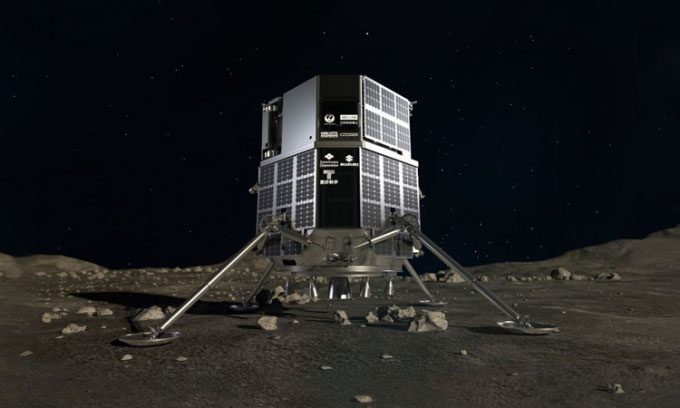The mission of Hakuto-R is to land and conduct several scientific experiments on the surface of the Moon. If successful, Hakuto-R will become the first lunar lander of a private company capable of landing on the Moon.
The Tokyo-based space startup, ispace, announced on February 27 that the Hakuto-R lunar lander is preparing for its attempt to land on the Moon at the end of April. The planned landing site is the Atlas crater in the northeastern part of the Moon, near the Mare Frigoris, also known as the Cold Sea.

Design of the Hakuto-R lunar lander by ispace. (Photo: Space)
Hakuto-R was launched into space from Florida, USA, in December of last year. The vehicle encountered several issues during its journey to the Moon, but many of these issues were fixable in-flight and will not hinder the scheduled landing, according to Takeshi Hakamada, the CEO of ispace.
If successful, Hakuto-R will mark the first time a private company has successfully landed a vehicle on the Moon. Previously, only national agencies from the USA, Russia, and China have accomplished this feat. Recent lunar landing attempts by India and a private Israeli company have both failed.
Hakuto-R carries a two-wheeled robot, approximately the size of a baseball, developed by the Japan Aerospace Exploration Agency (JAXA), as well as Rashid, a four-wheeled rover created by the UAE. Rashid is expected to study the Moon for 14 days (Earth days) using high-resolution cameras, thermal imaging devices, microscopy equipment, and sensors designed to examine electrical charges on the lunar surface.
ispace achieved a significant milestone in the mission last January when Hakuto-R completed one month of stable operations in deep space. On January 20, the vehicle reached its farthest point from Earth in its journey, approximately 1.375 million kilometers away.
During the flight, Hakuto-R experienced unexpected sensor issues in its control, navigation, and guidance systems. ispace reported that the mission team adjusted parameters to fix these systems. This system will assist the lander in positioning itself for a landing on the lunar surface.





















































